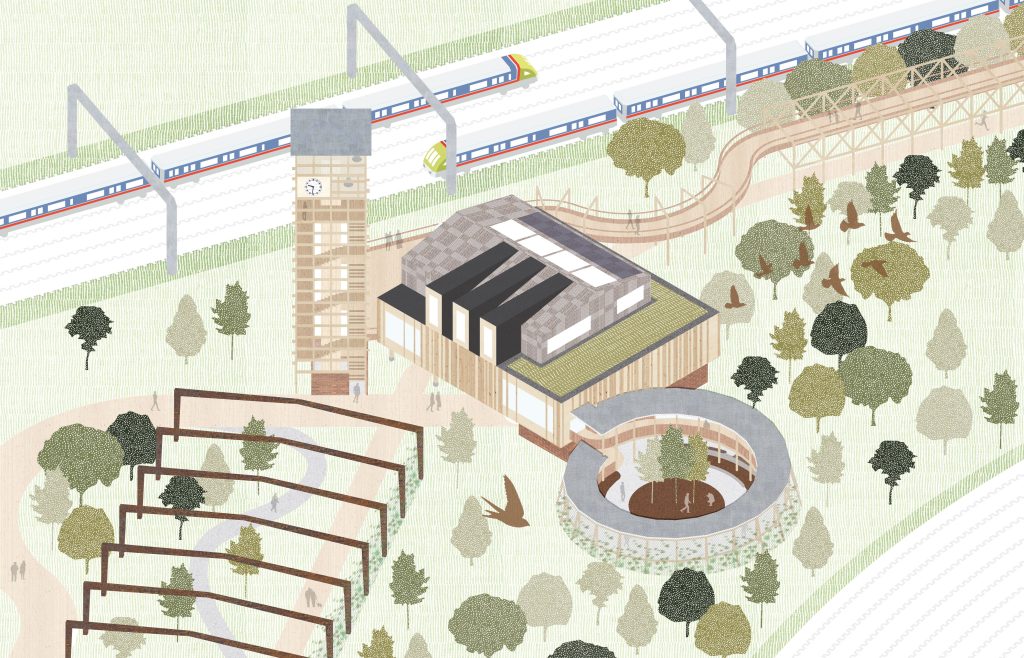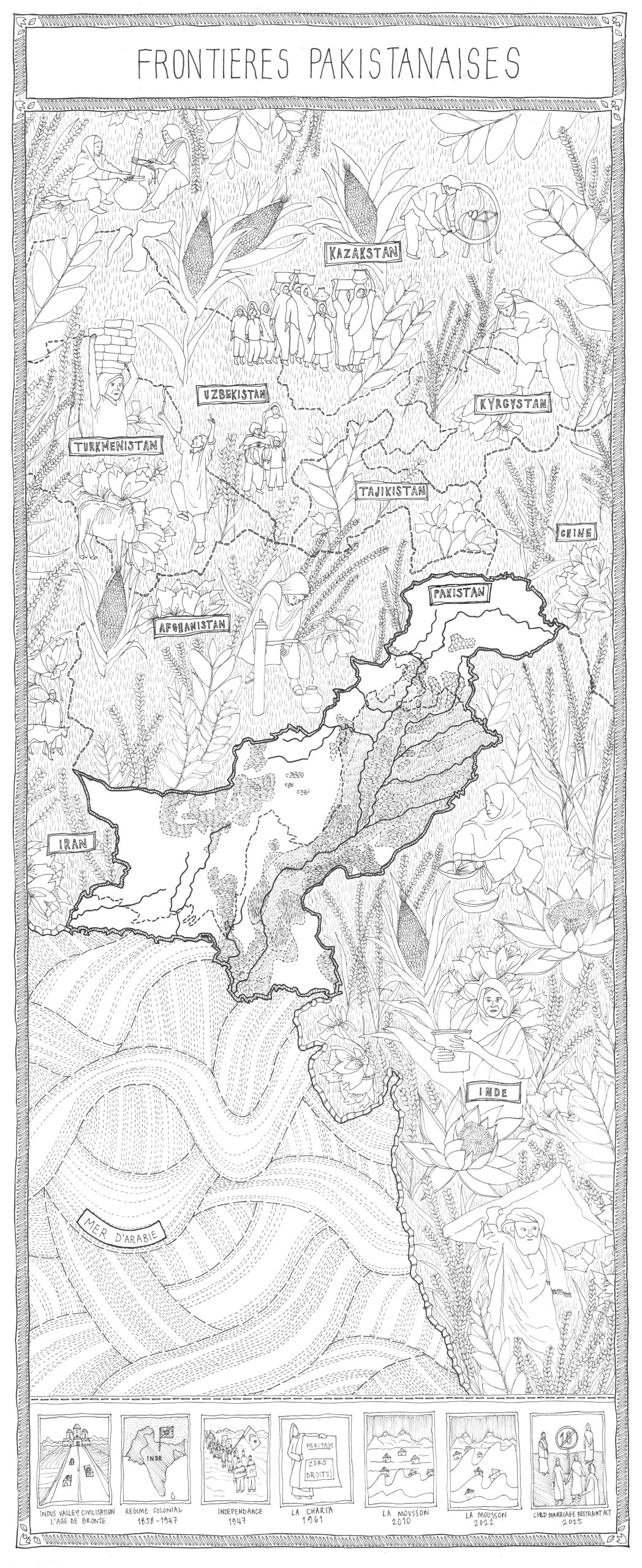A Living Landscape: Jamie Knowles’ Centre for Post-Industrial Ecology Weaves Nature into Crewe’s Architectural Fabric
An Emerging Voice in Sustainable Architecture
Manchester School of Architecture’s recent graduate, Jamie Knowles, stands out as a promising force in the evolving conversation on ecology and urban regeneration. Having completed his degree with first class honours, Knowles moved seamlessly into practice as a Part 1 Architectural Assistant, yet continues to spark interest in academic and professional circles alike. His accolades include the prestigious Sheppard Robson Jicwood Prize for Innovation, Sustainability, and Clarity of the Architectural Concept for his ambitious final year design, ‘The Centre for Post-Industrial Ecology’. Knowles’ curiosity and critical rigor also extend to the written word: his dissertation, ‘Nomadic Architectures of Extraction: Green Readings of the American Road Narrative’, has found recent acclaim with a feature in Dezeen, further cementing his reputation as a thoughtful emerging voice.
Ecology Reimagined: Greening Crewe’s Industrial Past
‘The Centre for Post-Industrial Ecology’ isn’t simply an academic exercise or an homage to green design—it’s an urgent proposition for how architecture can reinhabit the scars of industry with both humility and optimism. Situated on a site once defined by mechanised noise and dust, the design pivots towards a future that balances ecological regeneration with collective learning. Drawing inspiration from nature’s own ability to reclaim derelict land, Knowles’ project for Crewe proposes more than a building; it unfolds an evolving landscape, where the boundaries between architecture and habitat become productive seams rather than hard edges.
Key to Knowles’ vision is a commitment to biodiversity and minimal intervention. The masterplan prioritises undisturbed emerging habitats, allowing native species to flourish alongside carefully orchestrated phytoremediation strategies. Plants are used as active agents, not ornamental backdrops, working to extract and neutralise pollutants in a subtle choreography of restoration. In this way, the Centre’s grounds become a living laboratory—open systems in which soil, flora, and community intertwine.
A New Civic Landmark Rooted in Memory
At the heart of the initiative stands the Centre itself—a hub for collective exploration, reflection, and education. Here, Knowles refuses to separate theory from practice, instead curating a spectrum of experiences that blur classroom, exhibition, and workshop. Visitors shift seamlessly between immersive exhibits on ecological cycles and hands-on workshops in landscape stewardship, reinforcing the idea that sustainable living is both learned and enacted.
Materially, the Centre offers a tactile narrative of place. Here, Knowles shows a deft sensitivity to Crewe’s lost material heritage—most notably through the timber observation tower, which echoes the lines and mnemonic presence of the town’s demolished ‘Big Bill’. By salvaging and reinstalling the original bells and clock faces, he retrieves a thread of the town’s identity, weaving it into the fabric of a future-oriented architecture. Ornamental faience—locally crafted and interspersed between reclaimed brick—acknowledges the legacy of post-war reliefs, rooting the new building in a palimpsest of community memory.
Sustainable Innovation in Construction
The project’s environmental agenda carries through resolutely to its construction. Knowles employs a hybrid glulam and cross-laminated timber (CLT) superstructure, a testament to his commitment to both carbon-sensitive building and expressive material honesty. Partially clad in corrugated hemp board sourced from local producers and used as a natural rainscreen, the structure champions renewable material cycles and regional craftsmanship.
Inside, the building’s material palette is expressed with equal clarity and intelligence. Surfaces of exposed timber, unfired brick, and faience invite exploration both tactile and intellectual—the construction itself becomes an educational exhibit, offering up its sustainable logic to the scrutiny and curiosity of visitors. The effect is to demystify green building, demonstrating that ecological responsibility can be inseparable from architectural delight.
A Regeneration Model with Far-Reaching Impact
The significance of Knowles’ proposal lies as much in its process as in its presence. Rather than imposing a singular vision, ‘The Centre for Post-Industrial Ecology’ reveals how genuinely regenerative architecture must emerge from its context, mediating between historical memory, ecological systems, and civic aspiration. In reconnecting Crewe’s population to both the complexity of natural systems and the tangible substance of local history, the project articulates a hopeful model for post-industrial towns across the UK—a model in which environmental, educational, and social purpose are interwoven.
Engage with Jamie Knowles
Jamie Knowles’ blend of technical insight and creative storytelling marks him as a practitioner to watch. His achievements—including the Sheppard Robson Jicwood Prize and national attention for his dissertation—speak of a designer comfortable at the intersection of big ideas and meticulously crafted detail.
Those wishing to connect with Jamie—be it for collaboration, conversation, or to learn more about ‘The Centre for Post-Industrial Ecology’—are invited to reach out via LinkedIn or by email at jamieknowles0501@gmail.com. As attention increasingly turns to questions of urban resilience, circular economies, and meaningful regeneration, Knowles’ pathbreaking work exemplifies how the next generation of architects are shaping more hopeful futures—one inspired, site-sensitive project at a time.












Add a comment